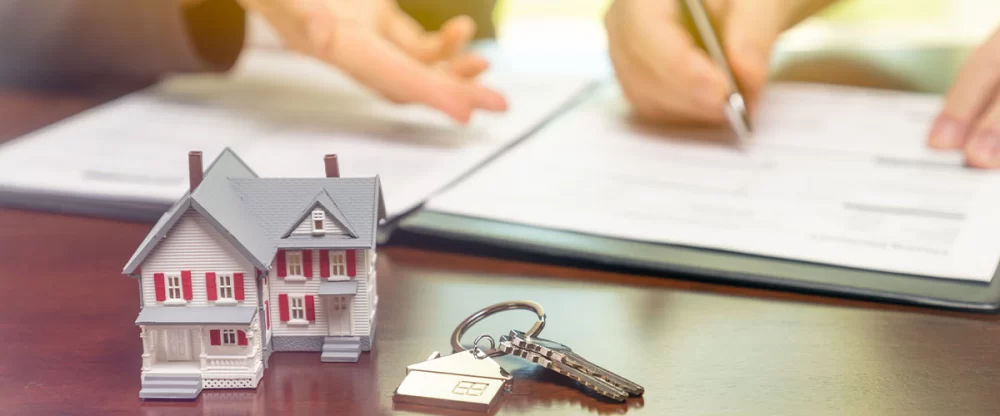
How to Prepare for the Home Closing Process
Purchasing a home is one of the most significant financial decisions you will make in your lifetime. After months of searching, bidding, and negotiating, you finally get to the closing process. But what exactly does the closing entail, and how can you make sure everything goes smoothly? In this guide, I’ll walk you through the essential steps to prepare for your home closing, sharing practical tips, personal stories, and insights that will help you navigate this exciting yet sometimes nerve-wracking final stage of buying a home.
1. Understanding the Home Closing Process
Before diving into the preparation steps, let’s quickly go over what the home closing process is all about. Closing is the final step in the home buying process, where ownership of the property officially transfers from the seller to the buyer. During closing, you’ll finalize your mortgage, sign all necessary documents, pay closing costs, and take possession of your new home. While it may sound straightforward, there are many moving parts involved. From reviewing paperwork to wiring funds, it’s crucial to be organized and prepared. So, let’s break it down into actionable steps.
2. Review Your Closing Disclosure
One of the first things you’ll receive before closing is the Closing Disclosure (CD). This document outlines all the final details of your mortgage, including the loan terms, monthly payments, and closing costs. I remember when I first got my Closing Disclosure – I was both excited and overwhelmed. The document was full of numbers, but it was so important that I took the time to review it carefully. You should too!
Ensure that the numbers match what you’ve previously agreed upon, including your loan amount, interest rate, and monthly payments. Pay close attention to the closing costs section, which can include lender fees, title fees, and insurance premiums. If anything seems off, now is the time to ask questions and clarify any discrepancies. You’ll want to avoid surprises during closing day.
3. Secure Your Financing
At this point, you should have already locked in your financing, but you’ll want to double-check with your lender to ensure everything is on track. You might need to provide additional documents such as updated bank statements or proof of income. It’s essential that you secure your financing early, as any last-minute delays could delay your closing date.
Additionally, make sure you’ve set up the necessary funds for closing day. Closing costs typically range from 2% to 5% of the home’s purchase price, so be prepared to wire the funds to the escrow account. This can be a large sum of money, so planning ahead is key. I learned this the hard way when I had to scramble to ensure the funds were available in time. Don’t wait until the last minute – make sure everything is ready well in advance.
4. Schedule a Final Walkthrough
One of the most important steps I highly recommend is scheduling a final walkthrough of the property. This is your opportunity to ensure that everything is in the condition you expect it to be. A lot can happen between the time you first saw the property and the closing day, so don’t skip this step!
During the walkthrough, check that any agreed-upon repairs have been made and that appliances or fixtures are in working order. Look for any damage that may have occurred during the move-out process, and make sure that the property is clean and ready for you to move in. When I did my walkthrough, I found a few minor issues that needed to be addressed before closing, which helped me avoid any disputes later on. It’s better to spot any problems now rather than discover them after the fact.
5. Get Your Documents Ready
As the closing date approaches, you’ll need to gather all the necessary documents for the big day. These can include your photo ID, proof of insurance, the Closing Disclosure, and your loan documents. Your lender or title company will typically provide you with a checklist of what you need to bring. If you’re unsure, always ask in advance to make sure you don’t miss anything important.
One thing I didn’t realize until later was that you would need to bring a cashier’s check or arrange for a wire transfer to pay your closing costs and down payment. Make sure to confirm the exact amount with your closing agent so you can have the right funds available. You wouldn’t want to find yourself scrambling for cash or having an issue with the payment method on the day of closing!
6. Review the Closing Costs
Closing costs can vary, and I was surprised by how many different fees popped up during the process. Aside from the obvious down payment, closing costs can include things like title insurance, property taxes, and home inspections. While your lender should provide you with an estimate early on, it’s always good to review the final numbers ahead of time to avoid any surprises.
Keep in mind that closing costs are typically due on the day of closing, so make sure you have the funds set aside for this. If you’re unsure about any of the costs, ask your lender or closing agent for clarification. It’s a good idea to ask for a breakdown of each fee so you understand where your money is going.
7. Closing Day: What to Expect
The big day is finally here! Closing day is usually a simple meeting, but it can feel a little overwhelming with all the paperwork involved. You’ll meet with your lender, closing agent, and possibly the seller to sign the necessary documents and complete the transaction. The closing agent will explain each document, so take your time to read through everything carefully. Don’t hesitate to ask questions if something is unclear.
Once all documents are signed, and the payment has been processed, you’ll receive the keys to your new home. It’s a moment of excitement, relief, and a sense of accomplishment. I remember feeling a mixture of joy and disbelief when I finally walked out of the closing meeting with keys in hand!
8. After Closing: Next Steps
Once you’ve closed on your new home, the work doesn’t stop there. Now it’s time to start planning your move and getting settled in. You’ll also need to start making your mortgage payments, and don’t forget to change the locks and set up utilities in your name. It’s a busy time, but with everything organized and planned ahead, you’ll be able to enjoy your new home without stress.
To wrap up, the home closing process can be a bit overwhelming, but with the right preparation, you can tackle it with confidence. Just remember to stay organized, ask questions, and take your time reviewing all documents. Soon enough, you’ll be unlocking the door to your dream home.








